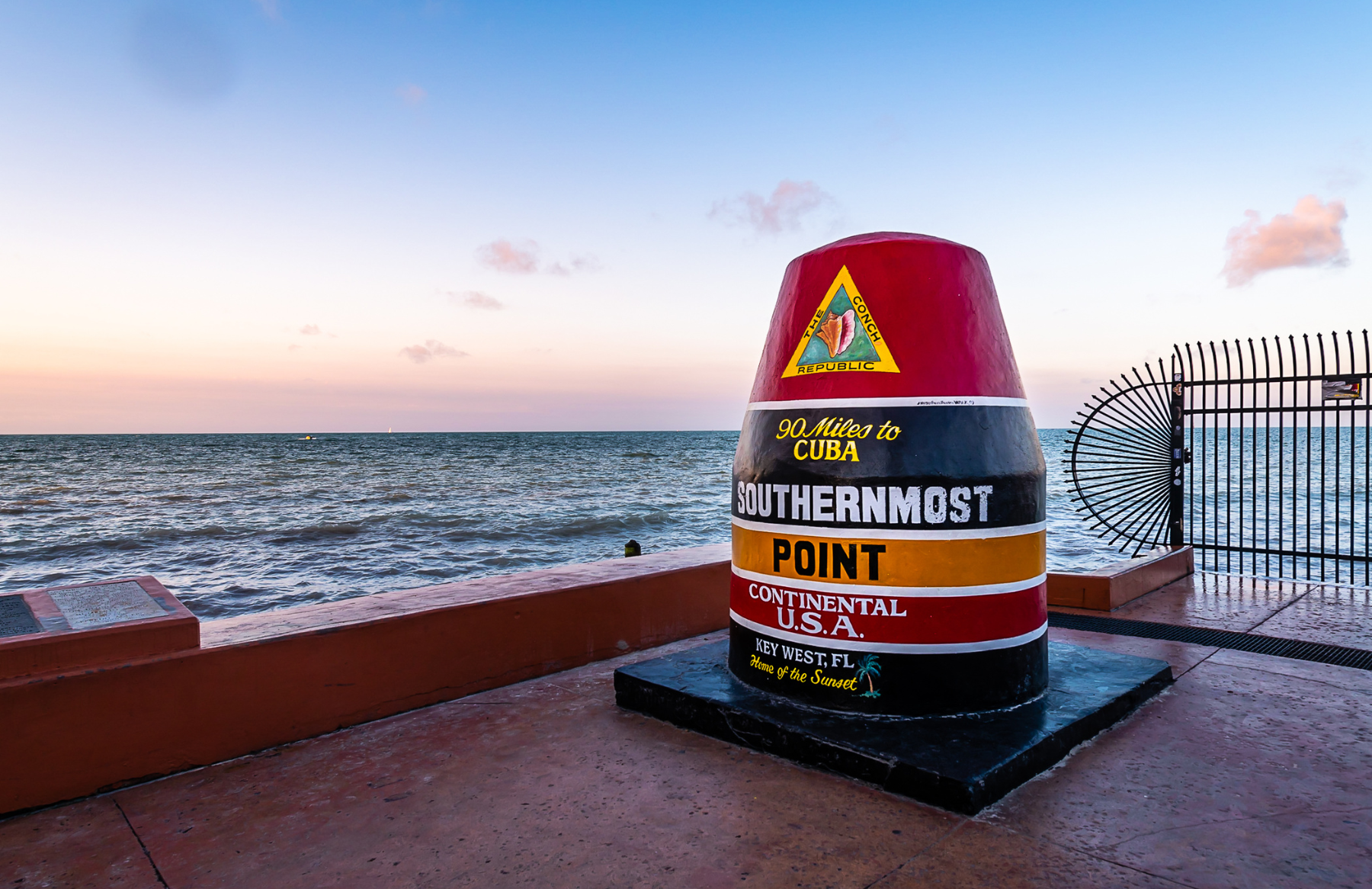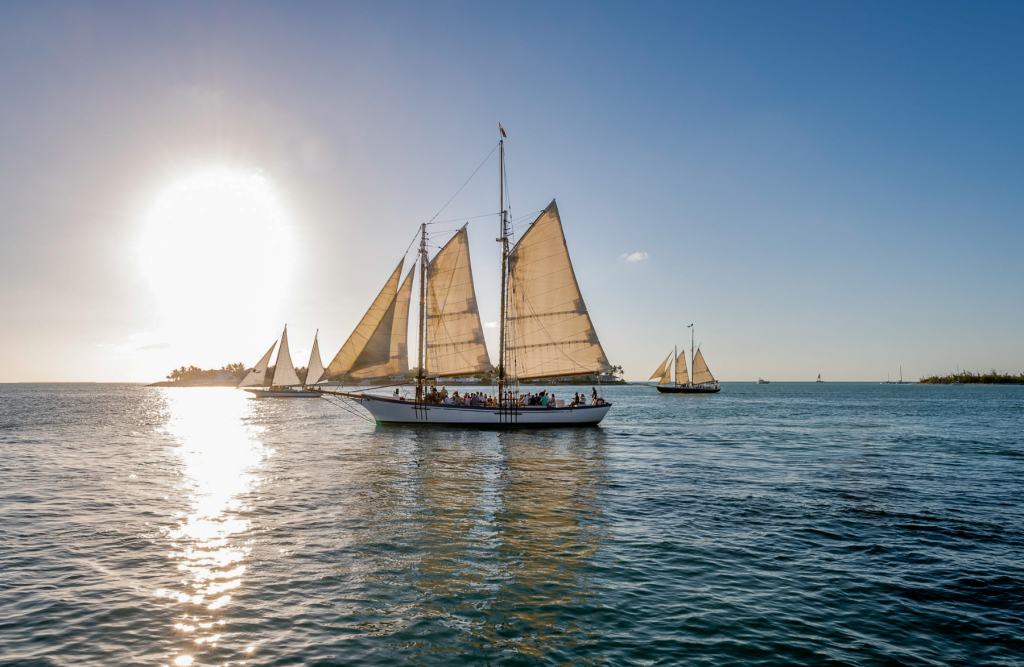
Welcome to Key West, the “Conch Republic”
Published on February 16, 2024
Our free Ernest Hemingway’s Key West guided tour Adventure explores the legendary author’s years on the island, complete with stops at a café and a bar.
By Dave Lifton (@daveeatschicago)
The island chain known as the Florida Keys had long been inhabited by the Calusa and Tequesta tribes, and spotted by Ponce de Leon during his 1513 expedition to Florida. He named the archipelago “Los Martires” (The Martyrs).
One of the islands in the chain was believed to have been the final battleground in a war between tribes, probably in the early 1700s. Bones were strewn around the terrain, and the Spanish gave it the name “Cayo Hueso” (Bone Island). In 1815 the land was granted to Juan Pablo Salas by Don Juan de Estrada, Florida’s Spanish governor, as a thank-you for his services in the army.
But in 1821, Spain ceded all of Florida to the U.S. Salas, who had yet to do anything with the land, offloaded it for $2,000 to John Simonton, a businessman from Alabama. He sold one-fourth of the island to the duo of John Warner and John Mountain, who subsequently transferred the title to Pardon Greene. Simonton sold another 25 percent each to John Whitehead and John Fleming.
A month after Simonton took possession, Lieutenant Commander Matthew Perry of the U.S.S. Shark planted the American flag on the island and called it Thompson’s Island for then-Secretary of the Navy Smith Thompson. But the designation didn’t take, and it was officially named after an anglicization of Cayo Hueso, Key West.
As a naval base, Key West became vital in the suppression of piracy in the West Indies, and the city soon got a boost through the Federal Wrecking Act, which declared that objects claimed in U.S. waters from sunken ships were U.S. property to be auctioned off. In 1928, 17 years before Florida was granted statehood, Key West was incorporated and declared a Port of Entry, with the Superior Court of the Southern District established to adjudicate salvage and wrecking issues.

Florida seceded from the Union in 1861, but Captain John Brannan quickly secured Fort Taylor, and Key West stayed in Union hands during the Civil War. It proved a crucial spot in the blockade preventing supplies from going in and out of Confederate cities on the Atlantic and Gulf Coasts.
The next major phase of Key West’s development came from industrialist Henry Flagler. The Overseas Railroad, an extension of his Florida East Coast Railway, connected the mainland to Key West, 128 miles away. It was built between 1905 and 1912 at a cost of more than $50 million. Although it never became the dominant shipping hub for freight traveling through the Panama Canal and the Caribbean that he envisioned, the Overseas Railroad was crucial in the early growth of Key West’s tourism industry. Another factor was the 1927 founding of Pan American Airways as a route between Key West and Havana, 90 miles away.
Ernest Hemingway and his wife Pauline Pfeiffer moved to Key West in 1928, and three years later bought a house at 907 Whitehead St. They lived there for eight years, during which time he wrote To Have and Have Not, The Snows of Kilimanjaro, and several other pieces. The home remained Pfeiffer’s following their 1940 divorce and opened as a museum and is the city’s most popular tourist attraction.
On Labor Day 1935, a Category 5 hurricane tore through the Florida Keys, with winds of up to 185 mph and a storm surge of 18 to 20 feet. Much of the Overseas Railroad was either damaged or destroyed and the Florida East Coast Railway, which was already bankrupt due to the Great Depression, couldn’t rebuild. The infrastructure was sold for $640,000 to the state, who converted it into the Overseas Highway in 1938, and became part of U.S. Route 1 shortly thereafter.
Less than a mile from Hemingway’s residence is Harry Truman’s Little White House, which was built in 1890 as part of the naval base on the island. President Truman first stayed there in November 1946 to recover from a debilitating cold. By the time he left office in 1953, he spent 175 days across 11 working vacations in the house. It was converted into a museum in 1990.
Other writers who lived in Key West include Tennessee Williams, Truman Capote, Shel Silverstein, Robert Frost, and Judy Blume. But arguably no one is as synonymous with the island than Jimmy Buffett, who lived there from 1972-1998 and worked the city’s laid-back approach into many of his songs and books until his 2023 death.
That easygoing lifestyle has even permeated into Key West’s politics. In 1982, the federal government put up a checkpoint on U.S. 1 in Florida City in search of drugs and undocumented workers, paralyzing traffic to and from the keys. Legal attempts to remove the roadblock failed, so Mayor Dennis Wardlow took a page from Macomb, Ill’s “Forgottonia” movement. On April 23, Wardlow announced that Key West was seceding and was now “The Conch Republic.” A minute later, he surrendered and applied for $1 billion in federal aid, which has yet to be paid. Every year since, the Conch Republic’s 60 seconds of independence are celebrated with a week of festivities.
The natural beauty and remote, tropical location of Key West, Fla. has long attracted sun-worshipers, artists of all stripes, and those looking for a simpler life. Perhaps, then, it’s fitting that it owes its history to the man who was searching for the Fountain of Youth.

The Adventure starts when you say it does.
All eATLAS Adventures are designed and built by experienced eATLAS Whoa!Guides. They're always on. Always entertaining. And always ready to go.
Check out our Adventures!